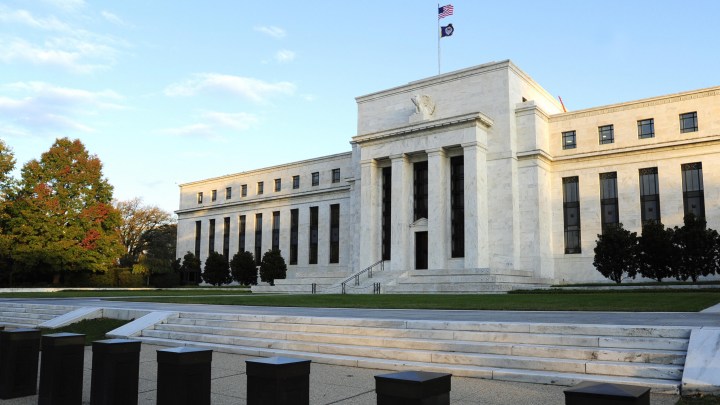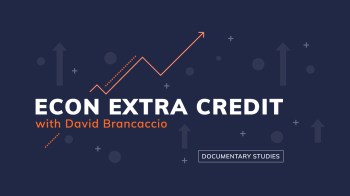
How does the Fed find an extra $2.3 trillion?
How does the Fed find an extra $2.3 trillion?

This is part of our “Econ Extra Credit” project, where we read an introductory economics textbook provided by the nonprofit Core Econ together with our listeners.
We all need to understand the economic fundamentals right now, more than ever. Get a refresher with our Econ Extra Credit newsletter.
Yesterday the Federal Reserve announced that to counteract the economic effects of the pandemic, it’s making $2.3 trillion available in extra credit to spur loans to cities and to small and medium-sized businesses.
It’s reasonable to ask: Where did the Fed find $2.3 trillion? Was it taxpayer money? No. It’s more like magic.
“In a certain sense, it is creating it out of thin air,” Homa Zarghamee, an economics professor at Barnard College who advises Core Econ, the publisher of the open-source economics textbook “Marketplace Morning Report” host David Brancaccio is reading with listeners.
When the Fed wants to fill regular banks full of extra credit — so the bank can furiously write a bunch of new small business loans — the Fed buys securities from those banks, often bonds. It pays for these securities not in gold bars from Fort Knox or something. It pays by typing in numbers that amount to a credit.
“Now the bank has more money to loan out,” Zarghamee said.
It’s like when you finally secure that home equity loan: the bank doesn’t send you $50,000 in $20 bills in a suitcase. The bank just indicates you now have a $50,000 credit which you can go out and spend when you are ready.
Former Fed Chairman Ben Bernanke talked about this after the last financial crisis: “To lend to a bank, we simply use the computer to mark up the size of the account they have with the Fed. So it’s much more akin, although not exactly the same, to printing money, than it is to borrowing.”
Note that printing money is just a metaphor. The Fed has no printing presses. But it has a keyboard which only a central bank can use to magically increase the total supply of money, which helps stimulate the economy when disaster is afoot, like now.
So why not just make up money like this all time?
“They’re not going to want to do this on a regular ongoing basis in order to kind of deal with any daily issue that might arise, because it’s going to increase the general price level and perhaps be hyperinflationary, which can be really bad for the economy in general,” Zarghamee said.
The economy has vast problems right now, but inflation isn’t one of them. The hope is, when things calm down, the Fed can sell those securities back back to banks, erasing the credit it conjured up.
There’s a lot happening in the world. Through it all, Marketplace is here for you.
You rely on Marketplace to break down the world’s events and tell you how it affects you in a fact-based, approachable way. We rely on your financial support to keep making that possible.
Your donation today powers the independent journalism that you rely on. For just $5/month, you can help sustain Marketplace so we can keep reporting on the things that matter to you.
















